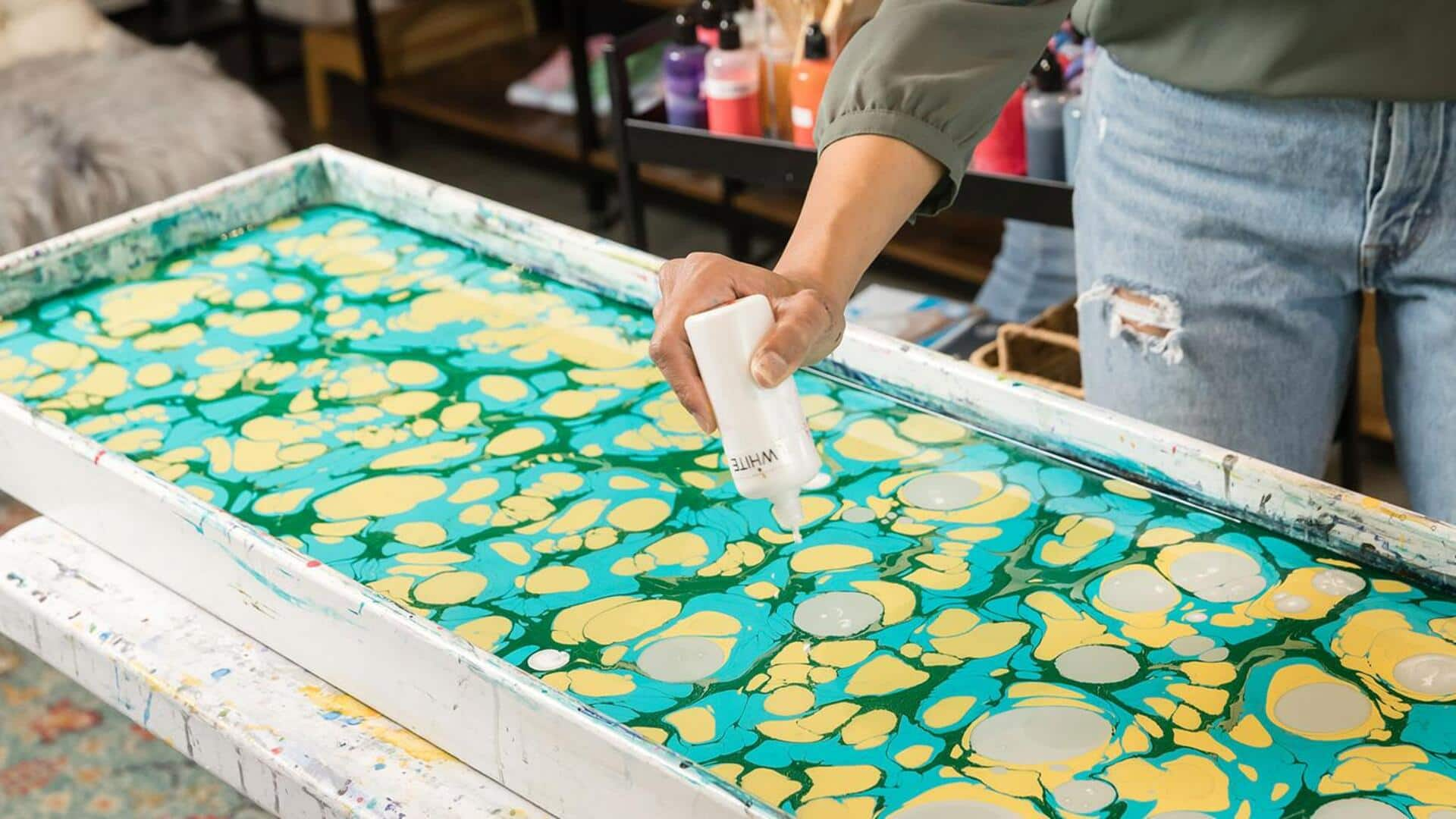
Colors in motion: Discover the art of water marbling
What's the story
Water marbling is a fascinating art where colors float and dance on water, creating intricate patterns.
The technique involves dropping paint on the surface of water and manipulating it to form unique designs.
The process is both mesmerizing and accessible, allowing artists of all levels to experiment with color and pattern.
With just a few materials, anyone can explore this captivating method of artistic expression.
Tools needed
Essential tools for water marbling
To start water marbling, you'll need some basic tools like a shallow tray/basin filled with water, marbling paints/inks, and paper/fabric to transfer the design.
You can use a stylus or toothpick to manipulate the paint on the surface of water.
These basic tools are easily available at most craft stores and provide everything you need to begin creating beautiful marbled patterns.
Paint selection
Choosing the right paints
Choosing the right paints is essential for successful water marbling.
Specially formulated marbling paints are designed to float on water without sinking. These paints come in a variety of vibrant colors that easily mix together.
Alternatively, you can also use acrylic paints if thinned properly with a flow medium.
Experimenting with different types of paint can give you diverse results in your artwork.
Pattern techniques
Techniques for creating patterns
Creating patterns in water marbling involves manipulating the floating paint with simple tools like combs or styluses.
Common techniques include swirling, dragging lines through the paint or using combs to create intricate designs like chevrons or waves.
Each movement alters the pattern uniquely, allowing for endless possibilities for creativity and experimentation.
Transfer tips
Tips for successful transfers
Once you have your design on water, transferring it on paper or fabric needs to be done carefully.
Lay your desired material onto the painted surface gently, without disturbing it much. Then, lift it off smoothly after a few seconds.
This makes sure all colors stick evenly on its entirety. Keep it aside till it dries completely before handling.
This may happen again later in the process completion phase.